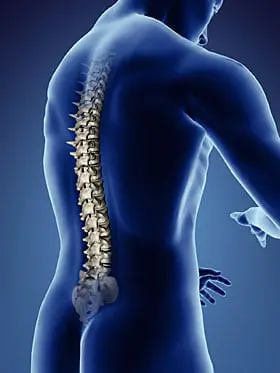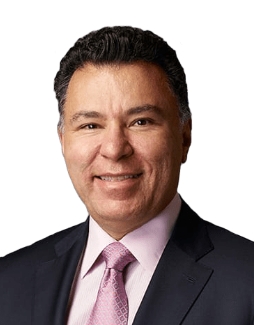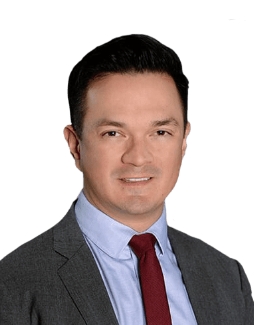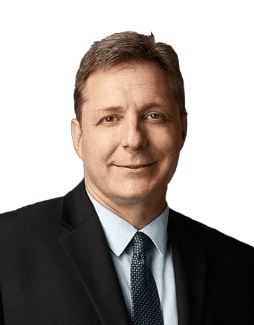Alexandre B. de Moura, M.D., FAAOS
Cervical Lumbar Spine Specialist, Medical Director


Cervical Spondylotic Myelopathy or CSM is a neck condition that arises when there’s a pinching or compression of the spine, it’s very commonly found in people 55 years and older. As the disks dehydrate and reduce in size, signs of osteoarthritis can develop.
We have offices located throughout Greater New York City, Long Island, White Plains and Newburgh, NY. Contact us today for a free consultation.
At New York Spine Institute, our professional doctors pride themselves on giving high quality care and services to all our patients neck, back and spine issues.
Led by our medical director, Alexandre B. de Moura, M.D., FAAOS. Our team of experienced doctors have the expertise to treat your complex spine disorders.
Our staff speaks a multitude of languages including Spanish, Portuguese, French, Italian, German and Russian to accommodate our patients of all backgrounds.

Cervical Lumbar Spine Specialist, Medical Director
Cervical Spondylotic Myelopathy is a degenerative disease meaning it worsens as you age. Although this condition is typically associated with older people, it can present itself in younger individuals as well. For most people, CSM doesn’t show any symptoms, however when symptoms do show, it’s typically a pain or stiffness in the neck. CMS can also be caused by other illnesses even if they don’t cause disc degeneration such as:
CSM is caused by the wear and tear that occurs in the spine as a person ages. As you age, the discs in your spine shorten and begin to bulge. As a result, the vertebrae move closer together. In response to this your body starts forming more bones (bone spurs) around your discs to strengthen them. These bone spurs can stiffen the spine and may also narrow the spinal canal through the pinching and compression of the spinal cord.*

Cervical, Lumbar, Adult & Pediatric Scoliosis and Spinal Deformity Specialist
One of our highly qualified doctors can properly diagnosis you through a thorough review of your medical history as well as an MRI through our imaging services. Since the spinal cord carries nerve impulses to various regions in the body, patients with CSM can experience a wide variety of symptoms that may include:
After a review of your medical history and list of symptoms you will receive tests through our imaging services such as an MRI, CT and an X-Ray.
MRI: We will be able to determine if your symptoms are caused by damage to the soft tissue by viewing you the compression of your spinal cord.
X-Ray: An X-Ray shows the dense structures in your body. Our doctors will be able to see the the alignment of your vertebrae.
CT Scan: A CT Scan is a detailed view of the narrowing of your spine, and can determine if bone spurs have developed in your cervical spine.

Cervical, Lumbar, Adult & Pediatric Scoliosis and Spinal Deformity Specialist
Depending on the severity of the case, CSM can be treated through various non-surgical treatments if symptoms aren’t relieved, surgery is an option.*
Non surgical treatment options include:
If a non-invasive approach doesn’t relieve symptoms one of our doctors may suggest your surgical options. Patients with symptoms and tests consistent with CSM are recommended to have surgery if there isn’t relief. Depending on your symptoms, the location of your problem, and other factors, your doctor could recommend one of four possible procedures, you can also visit our surgeries page to learn more about the procedures and preparation.
The four surgical procedures commonly performed to treat CSM are:
Make sure to set up a consultation with one of our doctors so you can be administered the best course of action.
Anterior Cervical Diskectomy and Fusion:
Your doctor will fuse together the spine and remove any problematic bone spurs or discs, in most cases a plate is added to the front of the spine for stability.
Anterior Cervical Corpectomy and Fusion
Similar to the Diskectomy, your vertebrae is removed rather than a disc in order to stabilize the spine.
Laminectomy
The doctor removes the bony arch that forms in the back of the lamnia, providing extra space for the spinal cord to drift backwards.
Laminoplasty:
Rather than removing the bone, the lamina is thinned out on one side and then cut on the other side to create a hinge much like a door. This method also creates more space for the spinal cord, relieving pressure.
*The effectiveness of diagnosis and treatment will vary by patient and condition. New York Spine Institute does not guarantee certain results.